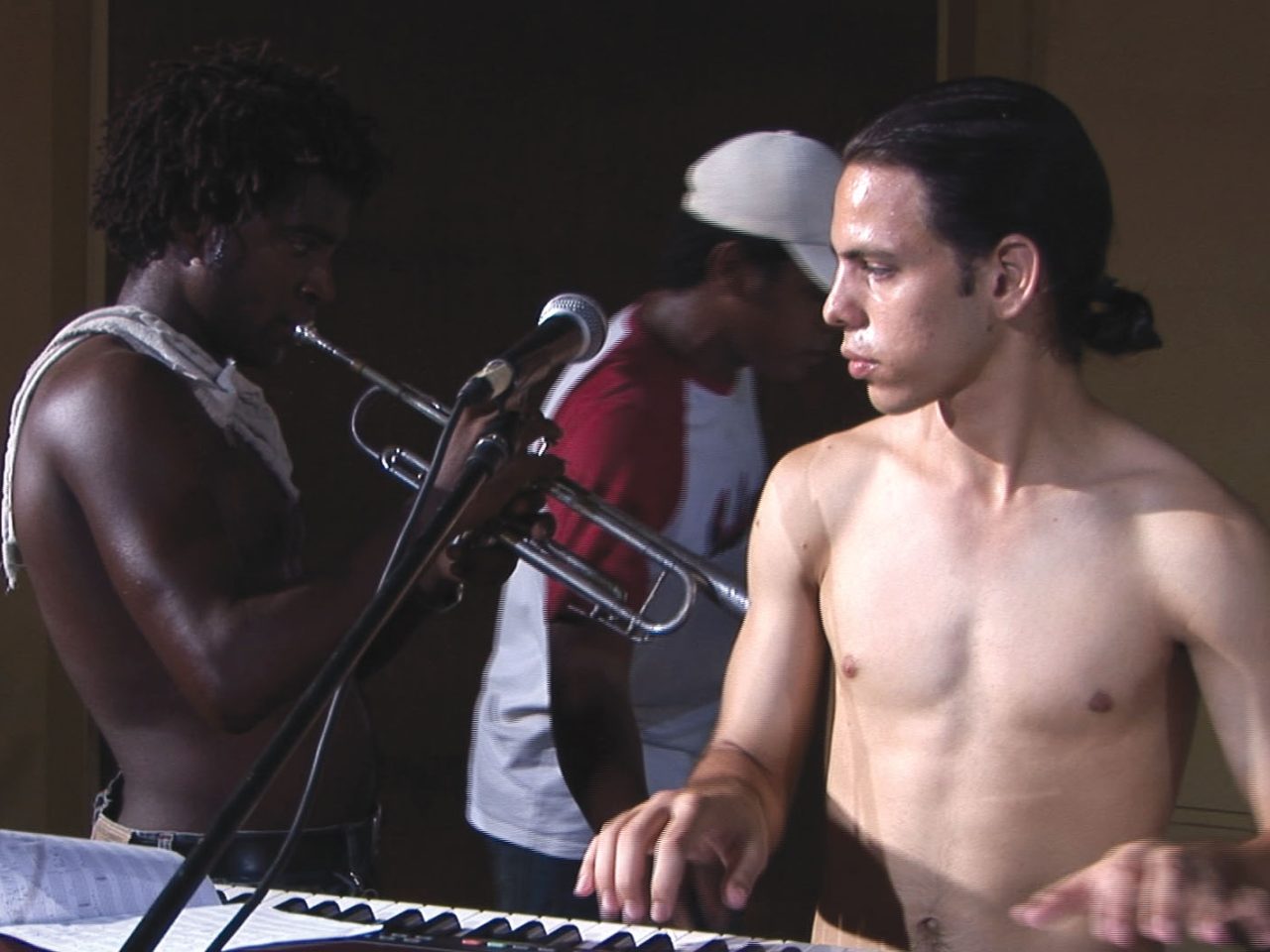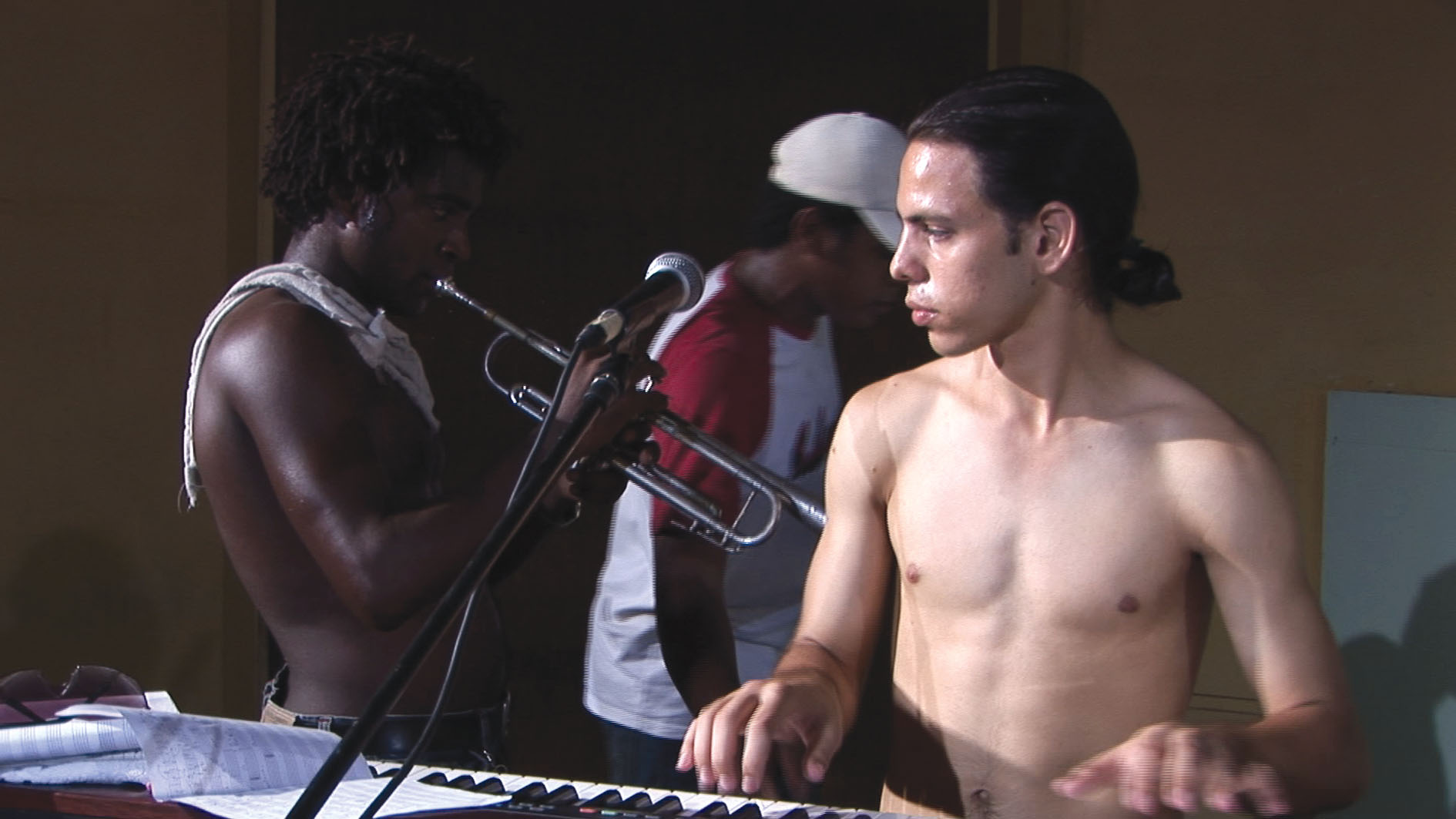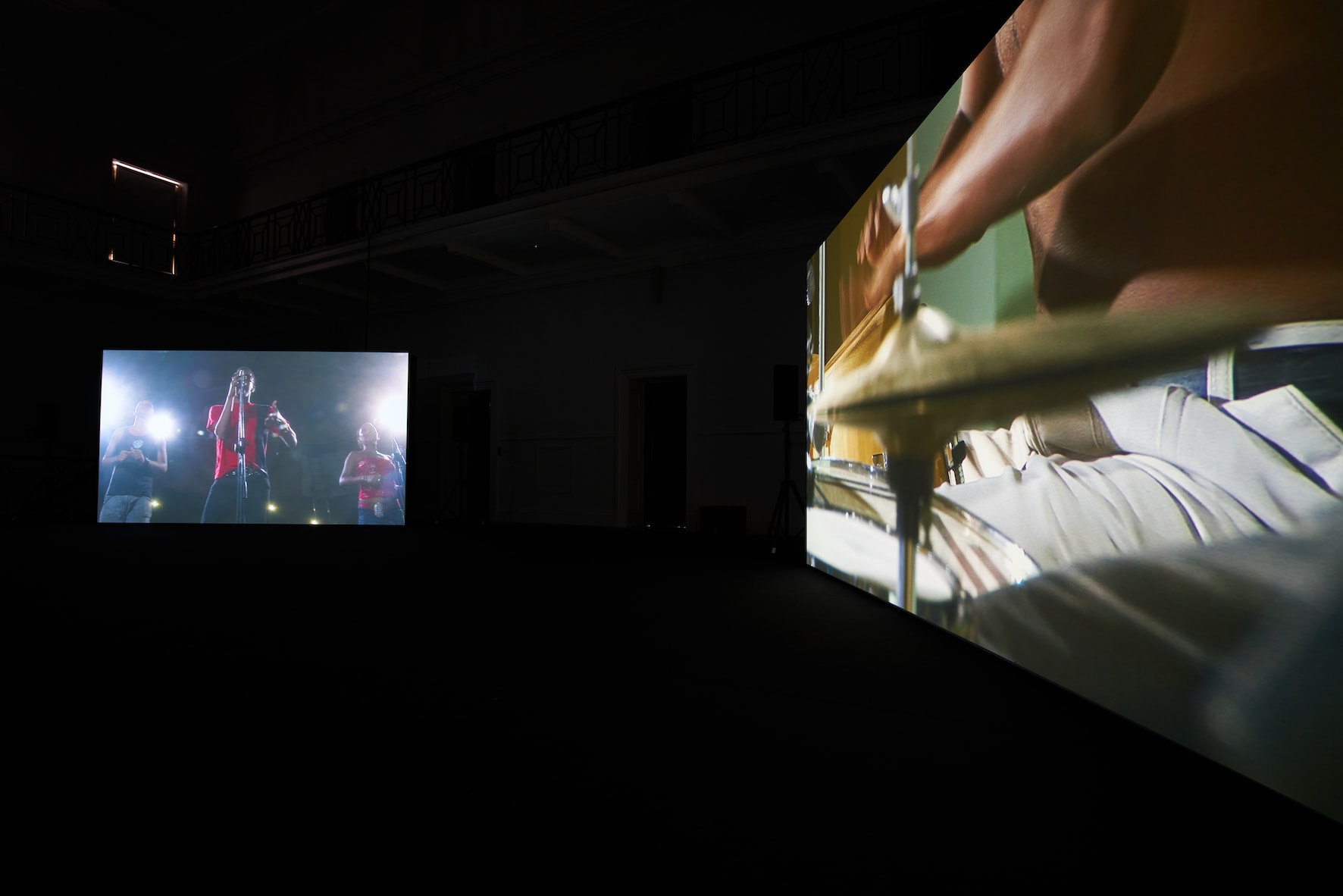David Zink Yi lives and works in Berlin, Germany. Zink Yi’s practice, rather than accomplishing an integration of heterogeneous fragments of identities and cultural spheres into a single patchwork identity dissolves and blends them in a way that affords us fundamental insight into how the other, the stranger, but also ourselves is constructed.
2021 Biennial Year Find out more
Zink Yi’s multi-disciplinary practice, comprising of film, photography, sculpture, performance and ceramics, is often a reflection of his own life experiences. He is also known for his multi-channel video installations, many of which revolve around the experience of music, analysing between individualism and cooperation, between regulation and expression, between what is known and what is new or still to be learnt. Building on the principles inherent to the Afro-Cuban music tradition, Zink Yi places his focus on the performative strength and interaction of the protagonists, framing the body as a medium of expression and space of resonance. Recent exhibitions include Haus der Kunst, Germany (2018); König Galerie, Germany (2016); 8th Berlin Biennale, Germany (2014); and 55th Venice Biennale, Italy (2013).
Liverpool Biennial 2021
'Horror Vacui'
David Zink Yi presented the two-channel video installation ‘Horror Vacui’ (2009) at Dr Martin Luther King Jr. building. The work operates as an extended picture without a beginning nor an end. The film centers around De Adentro y Afuera, a Latin band founded by Zink Yi and Cuban musicians, and combines footage of their rehearsals with images of ceremonial rituals rooted in Afro-Cuban culture. The emphasis is on the role of the rituals in the production of the music and vice versa. The ceremonies documented in the film, known as Cajon, Tambor Batá and Wiro, relate to the African diasporic religions Palo Congo and Santería and the religion of the the Yoruba people – whose spirituality and culture originates in
David Zink Yi presented the two-channel video installation ‘Horror Vacui’ (2009) at Dr Martin Luther King Jr. building. The work operates as an extended picture without a beginning nor an end. The film centers around De Adentro y Afuera, a Latin band founded by Zink Yi and Cuban musicians, and combines footage of their rehearsals with images of ceremonial rituals rooted in Afro-Cuban culture. The emphasis is on the role of the rituals in the production of the music and vice versa. The ceremonies documented in the film, known as Cajon, Tambor Batá and Wiro, relate to the African diasporic religions Palo Congo and Santería and the religion of the the Yoruba people – whose spirituality and culture originates in Nigeria, Benin and in the Congo Basin and lies at the root of different religious traditions in the Americas today due to the African Diaspora. In Zink Yi’s work, the band rehearsals and music filled with religious rituals are equally positioned as spaces where collective and individual identities can develop outside of oppressive power structures – as alternatives to relationships built on extraction and inferiority. Amidst the vast web of collaboration and dependency, which links the protagonists of both social universes, ‘Horror Vacui’ permits the spectator to become a channel, unifying fragments and intervals, immersing us in the colourful and seductive universe of Afro-Cuban music, whilst paying homage to the endless performative power of all the participants. Supported by Institut für Auslandsbeziehungen.
'Horror Vacui'
Liquid Club #12: David Zink Yi
The second online Liquid Club joined David Zink Yi on a journey through his multi-disciplinary practice, exploring the qualities of Afro-Cuban musical tradition and the principle of polyrhythms – the effect produced when two or more simultaneous rhythms are played together, reflecting multiple dynamic constructions of identity that counter binary positions. Together, we looked at Zink Yi’s past, present and future projects spanning sound and performance, and investigated different forms of knowing the world, celebrating the experiential, expressive, multisensory, temporal, affective and somatic.
Featuring special guest author, art historian and documentary filmmaker, Ben Lewis, Liquid Club #12 aimed to deepen our understanding of the power of performance, and the role of ritual and community in the development of a musical practice.
The second online Liquid Club joined David Zink Yi on a journey through his multi-disciplinary practice, exploring the qualities of Afro-Cuban musical tradition and the principle of polyrhythms – the effect produced when two or more simultaneous rhythms are played together, reflecting multiple dynamic constructions of identity that counter binary positions. Together, we looked at Zink Yi’s past, present and future projects spanning sound and performance, and investigated different forms of knowing the world, celebrating the experiential, expressive, multisensory, temporal, affective and somatic.
Featuring special guest author, art historian and documentary filmmaker, Ben Lewis, Liquid Club #12 aimed to deepen our understanding of the power of performance, and the role of ritual and community in the development of a musical practice.
About the artist
David Zink Yi (b. 1973, Lima, Peru) lives and works in Berlin, Germany. Best known for his multi-channel video installations, many of which revolve around the experience of music, Zink Yi’s varied practice comprises of film, photography, sculpture, performance and ceramics. Building on the principles inherent to the Afro-Cuban music tradition, Zink Yi places his focus on the performative strength and interaction of the protagonists, framing the body as a medium of expression and space of resonance.


